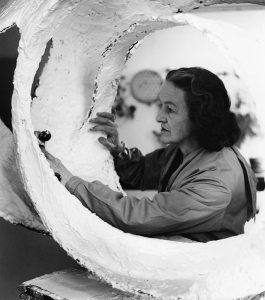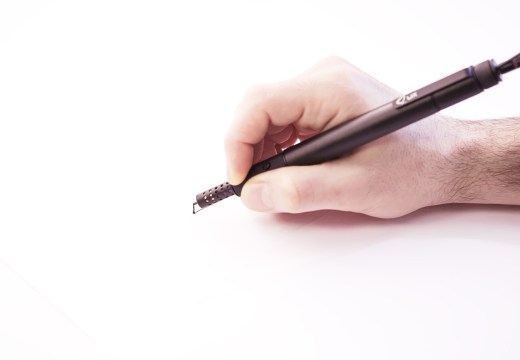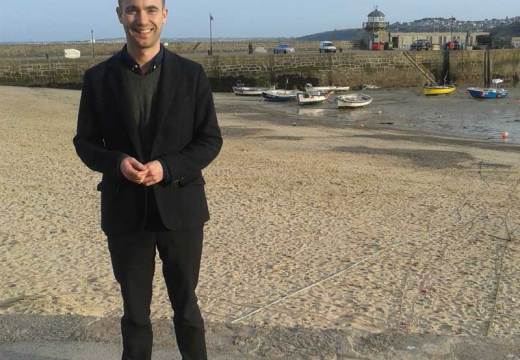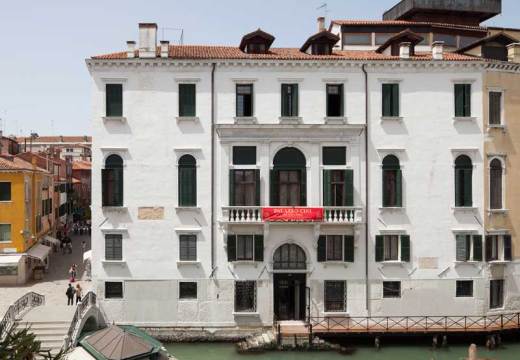From Wakefield, to Cornwall, to Greece, Barbara Hepworth was deeply inspired by the landscapes she chose to live and work in. A new exhibition at Abbot Hall Art Gallery explores this crucial aspect of her practice, looking at the places themselves and their traces in the form and surface of her sculptures. We spoke to the exhibition curator, Beth Hughes, to find out more.
Click here for a gallery of highlights from the exhibition
Can you tell us a bit about the exhibition?
‘Barbara Hepworth: Within the Landscape’ is a focused exploration of the artist’s engagement with the landscape throughout her career. From the rough and rugged West Riding landscape of her childhood to the idyllic views of St Ives in Cornwall, for Hepworth landscape was formative, multifaceted and constantly stimulating. The exhibition is divided into four rooms, each examining a different element of Hepworth’s engagement with the landscape. The exhibition will also show photographs and material from the artist’s archive can give insights into Hepworth’s inspiration, how she made her works and how she moved around them.
What makes this a distinctive show?
There are quite a few elements that make this show distinctive. Firstly, it is a focused look at one element of Hepworth’s work – her engagement with landscape. It isn’t a retrospective and won’t be arranged thematically, but it’s a comprehensive examination of an element of art which was most important to her.
How did you come to curate this exhibition?
A solo exhibition of Barbara Hepworth’s artwork is long overdue for Abbot Hall. Oval Form (Trezion) has sat outside our gallery since 1966 welcoming our visitors and is a key piece in our collection. We have been able to achieve a wide range of ambitious loans thanks to the support of the Hepworth Estate.
What is likely to be the highlight of the exhibition?
For me, the main highlight of this exhibition is the opportunity to see a wide range of the artist’s sculptures and then see her images from her archive. The archive images give a strong insight into the conception of the work and how she was inspired, so that you feel you really get to know the artist and her creative process.
And what’s been the most exciting personal discovery for you?
The Hepworth Estate allowed me to explore the artist’s photographic archive, which gave me the opportunity to get to know the artist better. By this I mean, I was able to see how the artist photographed her sculptures, how she moved around them, how she made them and how she sited them. This level of understanding was key to helping me bring the exhibition together and situate the works in our gallery.
What’s the greatest challenge you’ve faced in preparing this exhibition?
The main challenge with any sculpture exhibition is the weight and volume of the sculptures. As Abbot Hall was a former family home, the doorways and staircases are of a domestic size and it can be a challenge transporting such heavy, yet delicate, sculptures around the building. Calculating the logistics of this has been challenging.
How are you using the gallery space? What challenges will the hang/installation pose?
The exhibition is split into four rooms. The first explores Hepworth and the physical landscapes she is associated with; St Ives, Wakefield, Greece amongst others.

Barbara Hepworth at work on the plaster for Oval Form (Trezion) in the Palais de Danse studio, St Ives (1963) Photograph by Val Wilmer; courtesy Bowness, Hepworth Estate
The second room steps back from these landscapes and explores the universal approach Hepworth took. For example although the titles contain place names, Hepworth stated that the titles were added after the work was made and merely referenced the place where she was moved to make the sculpture. The third room looks at Hepworth’s approach to landscape towards the end of her career. Initially she thought of herself as being part of the landscape but by the late 1960s and early 1970s, Hepworth took a more holistic view, taking in sun, moon and stars. The fourth gallery shows a selection of photographs and other material from the artists archive. This room gives a fascinating insight into the artist, her inspiration and motivation.
Which other works would you have liked to have included?
There are many of Hepworth’s iconic works in the landscape which would have been lovely to have had the opportunity to show in the exhibition. Not least of these would be Figure for Landscape currently on display in Hepworth’s former garden at the Barbara Hepworth Museum in St Ives.
‘Barbara Hepworth: Within the Landscape’ is at Abbot Hall Art Gallery, Kendal, from 5 July–28 September.
Unlimited access from just $16 every 3 months
Subscribe to get unlimited and exclusive access to the top art stories, interviews and exhibition reviews.














![Masterpiece [Re]discovery 2022. Photo: Ben Fisher Photography, courtesy of Masterpiece London](http://www.apollo-magazine.com/wp-content/uploads/2022/07/MPL2022_4263.jpg)
Has the Fitzwilliam lost the hang of things?